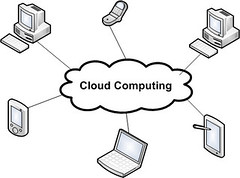 Something new to think about when moving into the cloud... location. You should probably know the physical location of your data when moving your compnay into the cloud. Physical location might impact the legal & regulatory aspects of moving to the cloud. More specifically, what country does the server reside in? Although I don't have all the answers regarding the specific legal and regulatory aspects that having your data in various countries may have, it's reasonable to postulate that there is most certainly risk here. For example, the US has very specific laws regarding search and seizure of computers and the information they hold, but these laws no longer apply when your data resides outside the US. I won't name countries here but many governments wouldn't hesitate to march into a data center, confiscate equipment and ask questions later. The point should be clear, understand where your data is kept and, if not in the US, understand the legal as well as business continuity risks. If you are a multi-national company it becomes more complex.
Something new to think about when moving into the cloud... location. You should probably know the physical location of your data when moving your compnay into the cloud. Physical location might impact the legal & regulatory aspects of moving to the cloud. More specifically, what country does the server reside in? Although I don't have all the answers regarding the specific legal and regulatory aspects that having your data in various countries may have, it's reasonable to postulate that there is most certainly risk here. For example, the US has very specific laws regarding search and seizure of computers and the information they hold, but these laws no longer apply when your data resides outside the US. I won't name countries here but many governments wouldn't hesitate to march into a data center, confiscate equipment and ask questions later. The point should be clear, understand where your data is kept and, if not in the US, understand the legal as well as business continuity risks. If you are a multi-national company it becomes more complex.- Chris Claborne
 I've never really thought of phone service as something that you can move to the cloud until reading a
I've never really thought of phone service as something that you can move to the cloud until reading a  Did you feel it? There was a disturbance in the cloud on June 1st.
Did you feel it? There was a disturbance in the cloud on June 1st. 